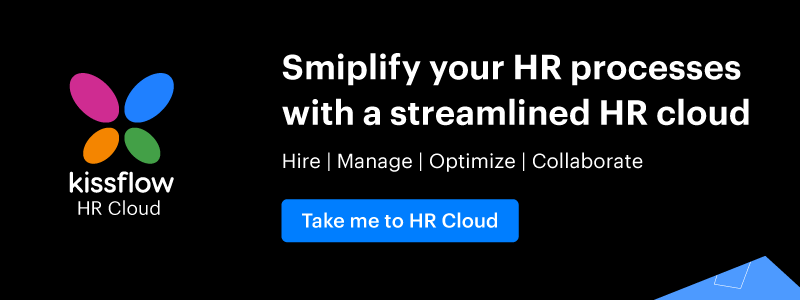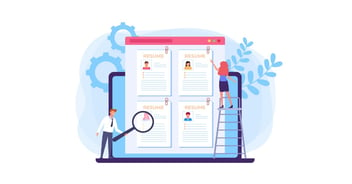The quality of an organization’s employees has a clear and direct link to its success. This increasingly recognized principle of modern human resources (HR) departments is why so many companies are focusing on hiring the very best future employees for their business. Let’s further explore how talent acquisition could work for your company in practice.
What is talent acquisition and what benefits does it have?
Talent acquisition refers to the ability of an organization to recruit quality employees to meet its operational needs. The work associated with talent acquisition usually falls within the scope of the HR team. However, some larger companies set up separate talent functions to manage the strategy and day-to-day work relating to talent acquisition, reflecting the importance of its function.
Getting the talent acquisition strategy of a company right is vital for its long-term success. It can help recruiters define and subsequently target candidates who possess specific skills and experience valuable to the organization, and implement imperatives to attract such individuals—supported by tools like employee onboarding software to ensure a seamless transition once they are hired."
Key differences between standard recruitment processes and talent acquisition
Talent acquisition is a specific and targeted HR activity and is distinct from standard recruitment process.
Here are some of the main differences:
| Standard recruitment processes | Talent acquisition |
| Is often reactive in nature | Proactively seeks passive candidates from a variety of places |
| Seeks to address current recruitment needs or skills gaps | Meets current recruitment needs as well as being forward looking and predicting future talent requirements in the business |
| Focuses on filling vacancies quickly and at the lowest cost | Focuses on engaging with and hiring the most talented employees in the long term |
What are the key steps involved in automated talent acquisition processes?
Automation has the potential to massively improve the talent acquisition process. First, new job vacancies can be automatically posted to relevant job boards, social media outlets, or recruitment agencies with minimal manual input from recruiters.
Not only does this get the vacancy advertised quickly and seamlessly, but it’s also a great way to directly target the types of talent you are looking to acquire—while freeing up HR teams to focus on strategic tasks like onboarding and travel and expense management, depending on where candidates are most likely to look for a new job.
Next, automation can help recruiters to engage in meaningful communication with top talent from an early stage of the hiring process, thanks to auto replies and real-time collaboration. This is a great way to form solid relationships with talented individuals early on and can significantly improve time to hire speed, as well as reduce candidate drop out rates.
10 techniques to boost your organization’s talent acquisition
We have talked about what talent acquisition is and how it can help your business. Let’s now think about the crucial aspect of how to achieve a successful and effective talent acquisition process across your business.
Here are top ten talent acquisition methods that can improve your hiring process substantially
1. Draw up a solid talent acquisition strategy
Step one is to analyze the current situation relating to talent acquisition in your organization and then work out some clear objectives to improve it in the short, medium, and long term. Ideally, you need to access data and statistics relating to the quality and effectiveness of your recruitment process and then work in partnership with the HR and leadership teams to create a robust recruitment strategy that works in harmony with your existing process.
2. Monitor the competition
If you feel that you are constantly losing out on quality candidates to your competitors, it is worth observing what methods they use to source and acquire top talent to their business. You may be missing a trick.
3. Benefit from talent acquisition software
Adding automation to your talent acquisition workflows is a great way to make them more streamlined and effective. There is a wealth of talent acquisition software on the market that can help you to refine your talent process.
Kissflow HR Cloud offers its users clear and easily accessible functionality with features such as auto job postings to job boards and real-time candidate collaboration. These features can really benefit your end to end recruitment process in a positive way.
4. Build-future proof talent pipelines
Move away from recruiting reactively to meet current business needs and also focus on the people requirements of your organization in the future. This means engaging with candidates and building relationships ready for future roles, ensuring a solid talent pipeline to proactively address future skills gaps.
5. Engage the wider business
Talent acquisition should be at the very heart of your organizational strategy for it to be effective. Therefore, it needs buy-in from stakeholders across the business, from the leadership team and hiring managers to external partners such as recruitment agencies.
6. Harness the power of employee referrals
Look to your existing talented workforce first when sourcing new talent. It is likely that they have contacts external to the business with the qualities and attributes that you admire in them.
7. Be agile and flexible
Your organization’s talent acquisition needs will fluctuate depending on a variety of factors, from the external economic environment to internal business circumstances. You need to flex your strategy accordingly to meet the talent needs of your business.
8. Build your brand image
Quality candidates are attracted to organizations with strong and recognizable employer brands, who are clear about what they offer in terms of future career opportunities, working environment, benefits, etc. Clearly define your employer brand and you stand a much greater chance of appealing to top talent in your market.
9. Engage with potential candidates across the longer term
If a candidate isn’t right for a current role, or you’ve found the perfect applicant but don’t have a position available, keep the channels of communication open so that you have a head start in terms of recruiting them if the situation changes in the future.
10. Review your talent acquisition success rates
Continuously monitor the success of your talent acquisition strategy and get feedback from the wider business so that you can make improvements to it where necessary.
How talent management strategies differ from talent acquisition
Talent management is another key aspect of a successful and forward thinking recruitment strategy but differs from talent acquisition, which is focused on sourcing, attracting, and hiring quality employees. Talent management is a broader term that refers to an organization’s attempts to retain, motivate, empower, and promote talented individuals within the business.
Examples of talent management initiatives include coaching and mentoring programs to encourage and build skills within the workforce, creating talent pools of employees with potential, and implementing robust succession plans to meet the future needs of the business from a people perspective.
Embrace technology to help you win the war for talent
Sourcing top talent to stay ahead of the competition can be fraught with challenges and frustrations. The so-called “war for talent” feels very real, and the competitive advantage that comes from hiring the most talented employees on the market is clear to see.
Using recruitment software to aid in your talent acquisition strategy, such as Kissflow’s HR Cloud, is the perfect way to streamline and automate the key tasks in your talent acquisition function. Sign up for a free trial and see how you can retrieve more value out of your talent acquisition strategy.














